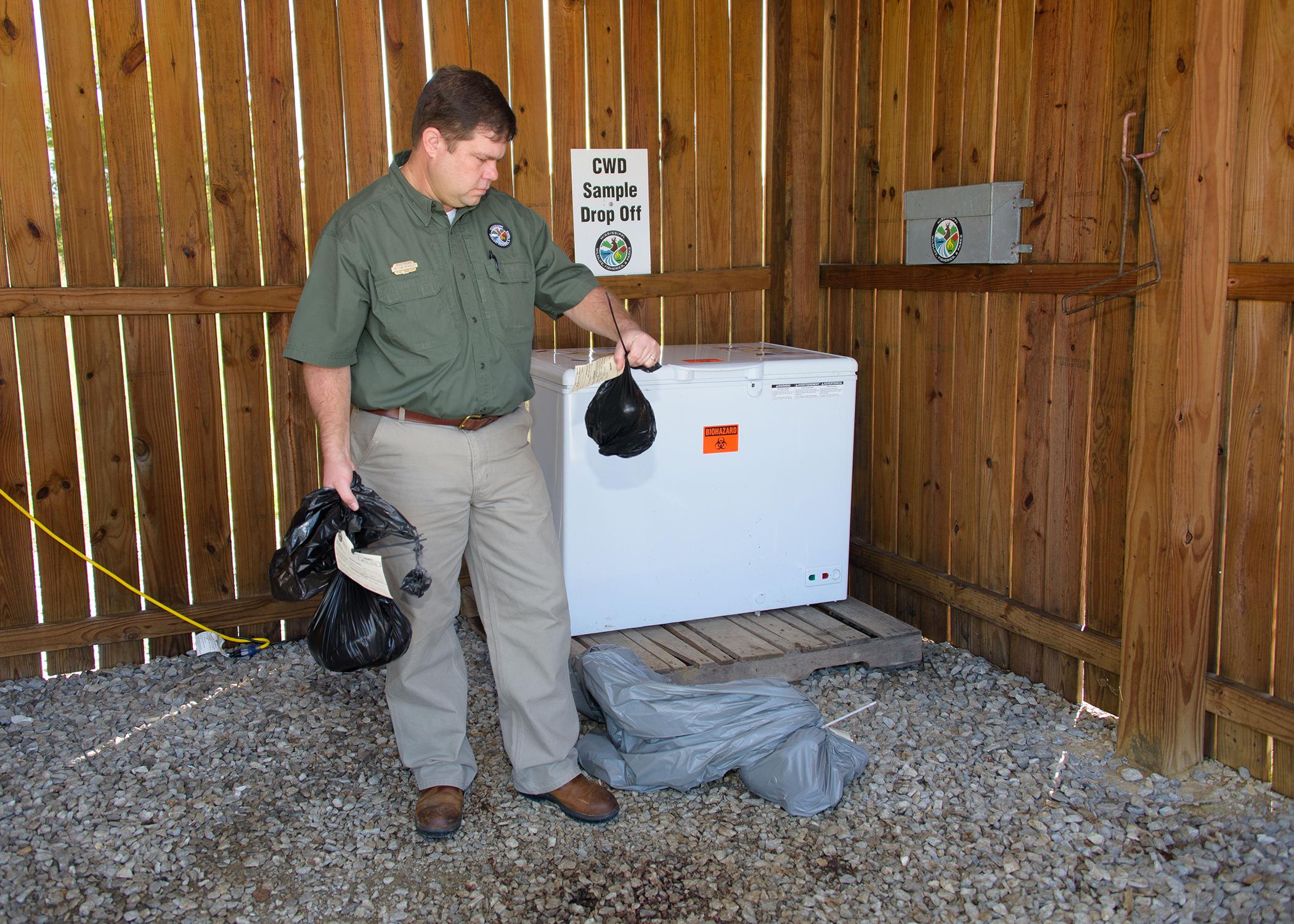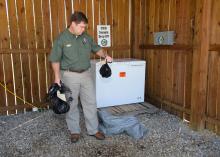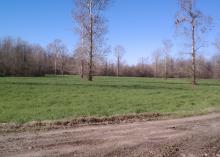Information Possibly Outdated
The information presented on this page was originally released on November 3, 2021. It may not be outdated, but please search our site for more current information. If you plan to quote or reference this information in a publication, please check with the Extension specialist or author before proceeding.
Deer management must change to battle CWD
CORINTH, Miss. -- A prion disease spreading through Mississippi whitetail deer populations has changed how herds are managed and may reduce the economic benefit of hunting in the state.
Chronic wasting disease, or CWD, has been found in whitetail deer populations in 26 states as of August 2021. It is easily transmissible to deer through saliva, feces, urine or a contaminated environment, and it is 100% fatal to infected deer. If left unmanaged, CWD devastates the deer population.
A prion is a type of protein that can trigger normal proteins in the brain to fold abnormally. Prion diseases can affect both humans and animals and are sometimes spread to humans by infected meat. The most common form of prion disease that affects humans is Creutzfeldt-Jakob disease. CWD has never been known to transmit to humans.
Dr. Jim Jackson, a veterinarian in Corinth, Mississippi, hunts in Tippah County and across the state line in nearby Hardeman County, Tennessee. Jackson tests every deer he harvests, and he encountered his first CWD-positive deer in Tennessee in 2020 and in Mississippi in 2021.
“The big problem with CWD is, most of the time, you can’t tell if the deer has it,” Jackson said. “The deer in Tennessee gutted about 175 pounds and was fat, slick and healthy. You’d look at it and say, ‘This deer is not sick. It’s good to eat,’ but it wasn’t.”
Jackson believes testing every deer harvested is a first step in managing the disease, but other steps are needed.
“The main thing we’ve done is try to depopulate a little bit -- shoot more deer,” Jackson said. “We took out the feeders and made bigger food plots so the deer can spread out.”
Bronson Strickland, wildlife specialist with the Mississippi State University Extension Service, said based on current knowledge of CWD, Jackson’s strategy is the best way to limit the spread of the disease.
“One of the pathways of CWD spread is through the infectious prions, which are found in high concentration in saliva,” Strickland said. “Supplemental feeding does not cause CWD, but it facilitates the spread of CWD when more deer are concentrated in certain areas, especially at a site where they are eating from the same feeder,” he said.
The Mississippi Department of Wildlife, Fisheries and Parks has eliminated supplemental feeding in CWD zones and is allowing more deer to be harvested in these areas.
The department issues tags to owners of private lands within three miles of where a CWD-positive deer has been harvested. They must apply for these tags, which allow them to hunt with firearms throughout the entire deer season, providing hunters more opportunities to harvest animals.
Strickland said people are being asked to change the hunting and deer management behavior they cultivated for decades, even though the effects of CWD may not yet be evident in their area.
“This is a long-term disease, and even though people already are worn out with it, the treatment is behavioral modification for the rest of their lives,” he said. “We need to get a critical mass of hunters on board to document big changes in the Mississippi deer herd.”
Constant assessment of the deer health is important.
The Department of Wildlife, Fisheries and Parks has established 46 testing sites across the state where hunters are asked to leave the heads of deer they harvest. Testing does not cost hunters, and results are typically returned within one week. This allows the hunters to keep the unprocessed deer in refrigeration until results on its health are back.
“Our state wildlife agencies can’t manage the disease if they don’t know where it is, so sampling helps our wildlife management professionals determine best management strategies to keep it from spreading,” Strickland said. “And if you eat your venison, testing gives you peace of mind.”
William McKinley, deer program coordinator with the Department of Wildlife, Fisheries and Parks, said another needed change is for hunters to harvest younger bucks to keep CWD in check.
“For years, we have said harvest older bucks. Now we say harvest younger bucks because this disease requires prevention,” McKinley said. “We have to begin making these changes now because it takes years to change the character of the deer herd.”
McKinley said hunters are urged to make these management changes even before the first CWD positive deer is found in their county.
“If we wait until we see a problem, then it will be too late,” he said. “If we wait 20 to 30 years and do nothing, this disease will manage the deer herd.”
Wisconsin and Illinois have had CWD among their deer population for years. Wisconsin did not actively manage, and now 41 of 72 counties have detected CWD-positive deer. In the most heavily affected areas, very few deer live to the older age classes. Illinois took early steps to reduce deer density and kept CWD prevalence under 5% of the deer.
“We cannot manage this disease without hunters. If we don’t have their cooperation, the disease wins,” McKinley said.
All of this adds up to a financial bottom line, in addition to the dampening effect CWD has on hunters’ enjoyment of the sport.
Ian Munn, a forest economist in MSU’s Forest and Wildlife Research Center, conducts research focused on hunting-related issues facing forest landowners. He said hunting leases are a significant form of income for many landowners. School districts also benefit from the income generated by hunting leases on Sixteenth Section lands.
“One of the primary drivers of lease prices is the trophy potential of the property, a function of the habitat quality and herd management,” Munn said. “As average life spans decrease due to CWD, the trophy potential of the impacted properties will also decrease, thereby lowering lease prices hunters are willing to pay.”
Munn said that, in areas where infection rates are high, hunting lease price decreases will likely be significant, resulting in major losses to landowners.
“In addition to these direct impacts to landowners, there will also be negative impacts on the local economies as disheartened hunters spend less money pursuing their sport,” he said.
Economists estimate that more than $500 million is spent in Mississippi annually on lease payments and direct expenditures related to deer hunting.
“If CWD is left unchecked, this total will decrease dramatically, as many hunters will either hunt elsewhere, cut back on their deer hunting or in extreme cases, stop deer hunting all together,” Munn said.
Find more information about CWD and its management and testing at http://mdwfp.com/wildlife-hunting/chronic-wasting-disease. A map shows drop-off locations and times. There is also an app to help hunters with this process.
EDITOR’S NOTE: This article is the third in a three-part series on the history, impacts and management of Chronic Wasting Disease in white-tailed deer. The series is available at http://extension.msstate.edu.





